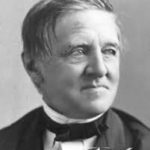Check out the website: https://lenspoliticalnotes.com Check on the Political Notes: Political Note #340 Counting Votes, Political Note #336 Georgia and the US Senate, Len’s Letter #34 Presidential Election Skullduggery
Len’s Letter #35 Messing with the Electoral College
2020 and 1876 General Elections




From left to right: President-Elect Joe Biden, Rutherford B. Hayes, Samuel Tilden, Texas AG Ken Paxton
In the 1876 Presidential Election, Democrat Samuel Tilden received 4.28 million votes; Republican Rutherford Hayes received 4.03 million votes. However, four states did not resolve who won their electoral college votes: Florida, Louisiana, South Carolina, and Oregon.
Race was central to the election in the South. The continuing struggle with the South was central to the election in the North. The Civil War had ended in 1865. Blacks who exercised rights awarded to them through Constitutional Amendments were faced with violence from the Ku Klux Klan and other white resisters. The Enforcement Acts passed congress in 1870 and 1871 were intended to ensure that Blacks could vote, hold office, and serve on juries. Under these Civil Rights laws, the federal government could intervene if Blacks were deprived of their rights through terror, force, or bribery. The President could use the US Army to enforce those rights and federal marshals could charge individuals with crimes. The election of 1876 was the first Presidential ballot after the end of the Civil War without Ulysses S. Grant, the former General-in-Chief of the Armies of the United States of America on the ballot.
It appeared as if the Democratic candidate, New York’s Governor Samuel Tilden, had won the election. Tilden’s appeal was as an anti-slavery and anti-corruption Democrat. He had opposed the election of Abraham Lincoln in 1860, arguing that Lincoln’s victory would lead to secession and civil war. When Lincoln won, Tilden opposed using force to prevent secession. In 1864, he supported General George McClellan for the Democratic nomination. McClellan, who had infuriated Lincoln because of his inaction as a general, supported continuing the war, but not abolishing slavery. The disputes about the four states left Tilden one vote short of an electoral college victory.=
Democrats argued the electoral college votes should be counted except for the four states in dispute. According to the Constitution, then as now, if no candidate has a majority of the electoral college votes, the House of Representatives would select the President. Democrats controlled the House in 1876. Furthermore, in 1825, within the memory of most politicians, the House of Representatives had elected John Quincy Adams as President.
Republicans, fearing they would be turning the government over to the losers in the Civil War, opposed that plan. Instead, they proposed a Commission of 15 to review the electoral college ballots and decide who won the disputed states. Democrats who controlled the House of Representatives were willing to go along – feeling confident that Democrats would prevail.
The Commission was to have five members from the House of Representatives, five members from the Senate, and five members from the Supreme Court. From the legislative branches, the party with a majority named three members, the party with a minority named two. Republicans controlled the Senate; Democrats controlled the House. Two Republican and two Democratic members of the Supreme Court were chosen. Those four would select the fifth member of the Supreme Court to serve.
The Justices selected Justice David Davis, a political independent as the Democrats had expected. The Illinois Senate then elected Davis to the US Senate possibly thinking the promise of a Senate seat would ensure Davis’s support for Tilden. Davis surprised them. He resigned from the Supreme Court to take the Senate seat, making him ineligible to serve on the Commission. The remaining members of the Supreme Court were Republicans. The four Justices then selected Joseph P Bradley who they considered the least partisan of the remaining Republican Justices.
The Commission and state boards of election went to work considering the electoral college votes from the four states. There was reason to be skeptical of the popular vote in the Democratic victory in South Carolina. One hundred and one percent of the eligible voters in South Carolina voted in the election. Furthermore, as was characteristic of voting in the day, voters used tickets with symbols on them to vote. Some Democratic ballots deceitfully pictured Abraham Lincoln on their ballot. The state electoral commission, dominated by Republicans, threw out enough Democratic ballots to declare the electors for Rutherford Hayes as the winners. The Board of Elections certified the seven Electors pledged to Hayes as the winner.
The process was similar in the election disputes over Florida’s four electoral votes and Louisiana’s eight. Unlike South Carolina, neither state had more than 100% of the registered voters voting. In Florida, the Democratic/Conservative Governor David Walker signed the certificate for the four Republican Electors. The newly elected Democratic Governor and Attorney General signed the certificate for the Democratic Electors. In Louisiana, the Republican Governor William P. Kellogg signed the certificate for the eight Republican Electors; Francis Nicholls, the Democratic candidate for Governor, signed the certificate for the Democratic Electors. (I’ve inferred the names above – I was able only to find the offices of the people who signed.)
Oregon was particularly important. One electoral vote was in dispute. The resolution of the election was by a single electoral vote. Even though Hayes carried Oregon, the Democratic Governor, LaFayette Grover, rejected the vote of one of the Republican electors. That elector was John Watts, a postmaster who quickly resigned his job when his voting was challenged, but not quickly enough. According to Governor Grover, Watts had held a position of power or trust under the United States and, therefore, violated the US Constitution serving as an Elector.
Grover called a meeting of the several electors and the Secretary of State. The result was two separate documents. One, signed by Grover, certified two Republicans and one Democrat as Electors. The other, signed by the Secretary of State, certified three Republicans as Electors. The fifteen-member commission accepted the certification by the Secretary of State, whose job it was to certify elections. As a result, Rutherford B. Hayes became President of the United States.
The men who voted to make Rutherford B. Hayes President weakened the post-Civil War American democracy. While some of them believed they were sustaining the ideals of the victory in the Civil War, either the Republican or the Democrat would have put an end to Reconstruction. Whether there was a formal agreement or not, a Republican President would abandon the Reconstruction of the South. Grant had been retreating from the use of the military in the South throughout his second term. Rutherford B. Hayes announced he would serve only a single term and, after he became President, withdrew all remaining troops from the South.
We should remember the men who arranged for the candidate who received fewer votes in 1876 to be remembered. All Commission votes were 8-7, eight Republicans versus seven Democrats.
The following are the Republican members of the Commission.
Joseph P. Bradley of New Jersey. A member of the US Supreme Court (From a poor family in New York, he became a railroad and patent attorney, and a friend of the descendant of New Jersey “aristocrats” Frederick Frelinghuysen, before being appointed to the court)
George F. Edmunds of Vermont. A member of the US Senate. (Former Speaker of Vermont’s House, former President Pro Tem of Vermont’s Senate, President Pro Tem of the US Senate and Chair of the Republican Conference, he retired to Pasadena CA)
Frederick T. Frelinghuysen of New Jersey. A member of the US Senate (Descendant of a revolutionary war leader, member of a prominent political family whose last Member of Congress was moderate Republican Rodney Frelinghuysen who retired in 2018)
James A. Garfield of Ohio. A Member of the House. (Elected President in 1880, assassinated during his first year in office. Grew up poor in Ohio, went to Williams College, was a radical Republican who became more moderate.)
George Frisbie Hoar of Massachusetts. A Member of the House (From a prominent Massachusetts political family, had a BA and legal training Harvard, later became a Senator and a paternalistic supporter of Native Americans and opponent of American Imperialism)
Samuel Freeman Miller of Iowa., A Member of the Supreme Court (Born in Kentucky, trained as a medical doctor there. An abolitionist and a strong supporter of Lincoln, he had moved to Iowa and freed his few slaves there.)
Oliver Hazard Perry Morton of Indiana. A Member of the Senate. (Governor of Indiana during the War, Radical Republican strong abolitionist and supporter of Lincoln. Elected to the Senate after he had a stroke, enormously popular in Indiana and nationally)
William Strong of Pennsylvania A Member of the Supreme Court (Born in Connecticut, went to Monson Academy in Massachusetts, Phi Beta Kappa at Yale, legal training at Yale, initially elected to House as an abolitionist Democrat, became a Republican only after joining the Supreme Court)
Take a look also at the Democrats on the commission.
Josiah Gardner Abbott of Massachusetts. A Member of the House. (A descendent of English Puritans who emigrated to Massachusetts in the 17th century, he went to Harvard, studied law at Williams and was elected to the Massachusetts legislature. A well-known litigator, he was several times the unsuccessful Democratic nominee for the US Senate, before being elected to Congress.)
Thomas F. Bayard of Delaware. A Member of the US Senate. (He was a “peace” Democrat who opposed the post-war Reconstruction of the South. He sought the presidency unsuccessfully and was appointed Secretary of State by President Grover Cleveland.)
Nathan Clifford of Maine. A member of the Supreme Court. (An opponent of the abolition of slavery, he was Attorney General under Polk, then Ambassador to Mexico during the negotiations of the treaty of Guadalupe-Hidalgo which made California and more part of the US.)
Stephen Johnson Field of California. A Member of the Supreme Court. (Born in Connecticut, he grew up in Stockbridge, Massachusetts, went to Turkey with his sister who was a missionary, returned to attend Williams College. He left practicing law for the California gold rush, and was elected mayor (alcalde) of Marysville shortly after he arrived. Irascible and difficult, he was nevertheless appointed, as an anti-slavery Democrat, by Lincoln to the Supreme Court.)
Eppa Hunton of Virginia. A Member of the House. (He had been a Brigadier General in the Confederate Army. An owner of six slaves, he managed three plantations and was an advocate of secession before the Civil War.)
Henry B. Payne of Ohio. Represented the House. (Born in Hamilton, NY and graduated from Hamilton College, he was a friend of Stephen A Douglas. He moved to Ohio, developed a successful law practice, and invested in railroads. He supported Douglas for President, opposed abolition of slavery and the expansion of slavery beyond the South. In 1872 he supported Horace Greeley for President and was elected to the House in 1874. He was defeated in 1876, but was, nevertheless, allowed to serve on the Commission.)
Allen G. Thurman of Ohio. A Member of the Senate. (Born in Virginia, his family emancipated their slaves and moved to Ohio when he was young. As the House’s youngest congressman, he voted for the Wilmot Proviso banning slavery in territories gained from Mexico. In the Senate, he opposed Reconstruction and was one of the leaders in creating this Commission on which he served.)
Final Thoughts
The Republicans, inheritors of Abraham Lincoln’s legacy, retained the presidency. They elected an anti-corruption, civil service reformer rather than the Democrat, who had opposed slavery and corruption. The Republicans ended Reconstruction as Democrats would have. To achieve their victory, the Republicans took a step away from democracy.
In 2020, we have had our own efforts to mess with the Electoral College and members of the contemporary Republican Party have sort to prevent the election of a Democratic President. The lawsuit initiated by Ken Paxton, the Attorney General, supported by 17 other Attorneys General, and 126 Members of Congress has been the most blatant effort to overturn an American Presidential election since 1876. The Supreme Court rejected the lawsuit, but the process is not over. Republicans promise to attempt to interfere with the count of the electoral college ballots by the joint session of Congress on January 6, 2021 hoping to somehow reelect Donald Trump as Presidennt.
We will want to remember their names – the men and women who cared more for their political party than for democracy in America.
